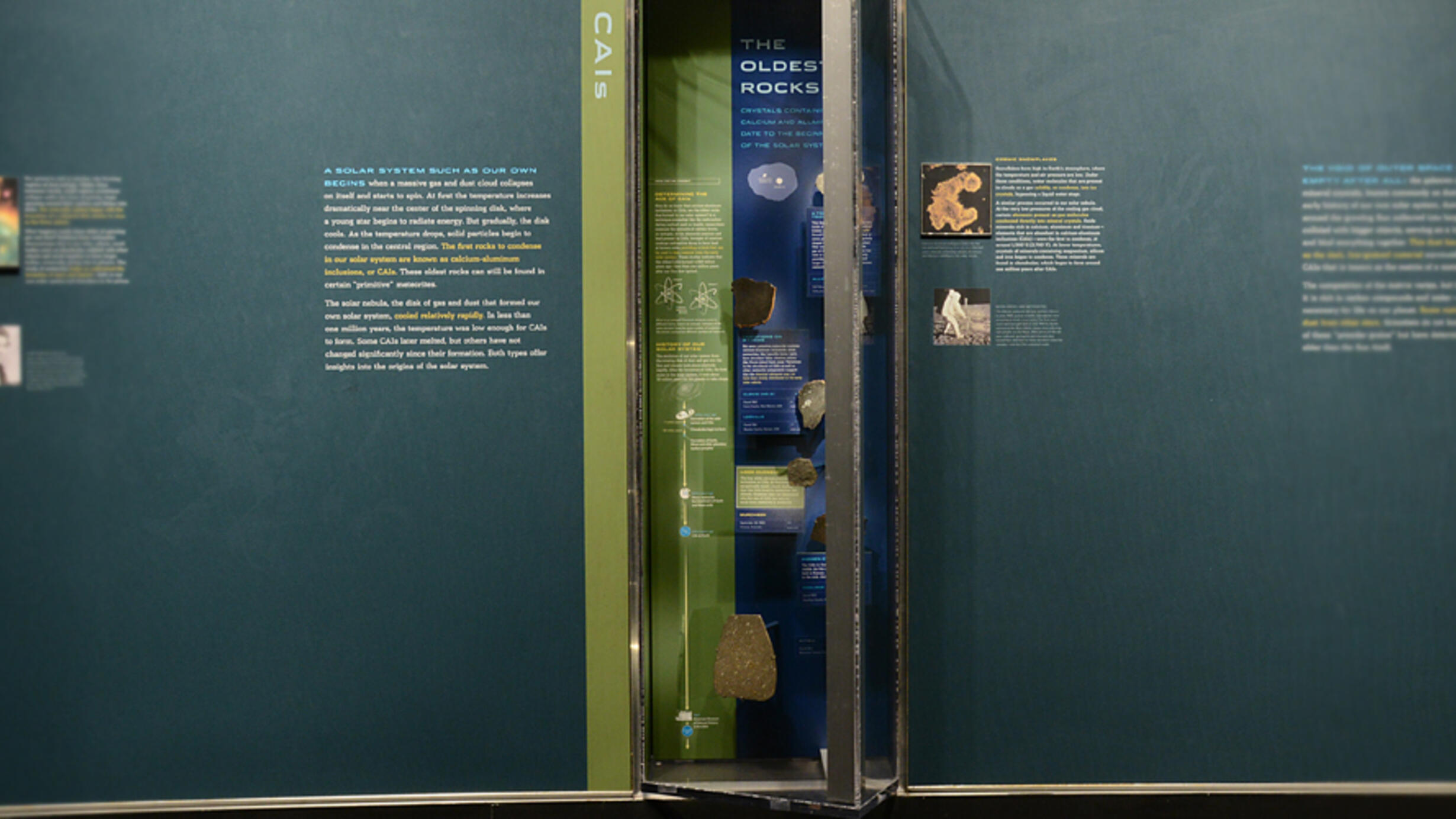CAIs
Part of Hall of Meteorites.

A solar system such as our own begins when a massive gas and dust cloud collapses on itself and starts to spin. At first the temperature increases dramatically near the center of the spinning disk, where a young star begins to radiate energy. But gradually, the disk cools. As the temperature drops, solid particles begin to condense in the central region. The first rocks to condense in our solar system are known as calcium-aluminum inclusions, or CAIs. These oldest rocks can still be found in certain "primitive" meteorites.
Cosmic snowflakes
Snowflakes form high in Earth's atmosphere, where the temperature and air pressure are low. Under these conditions, water molecules that are present in clouds as a gas solidify, or condense, into ice crystals, bypassing a liquid water stage.
A similar process occurred in our solar nebula. At the very low pressures of the cooling gas cloud, certain elements present as gas molecules condensed directly into mineral crystals. Oxide minerals rich in calcium, aluminum and titanium—elements that are abundant in calcium-aluminum inclusions (CAIs)—were the first to condense, at around 1,500°C (2,700°F). At lower temperatures, crystals of minerals containing magnesium, silicon and iron began to condense. These minerals are found in chondrules, which began to form around one million years after CAIs.